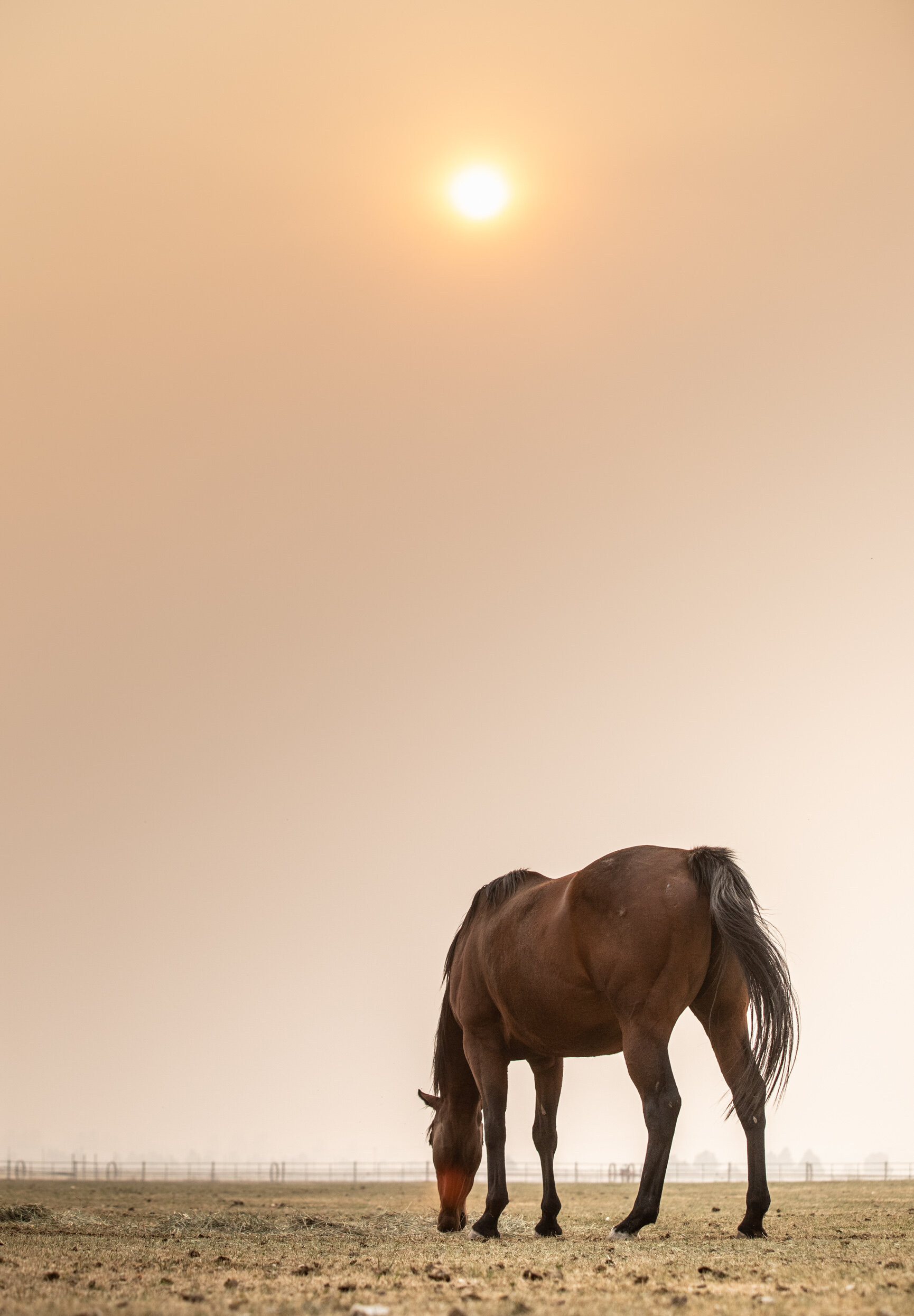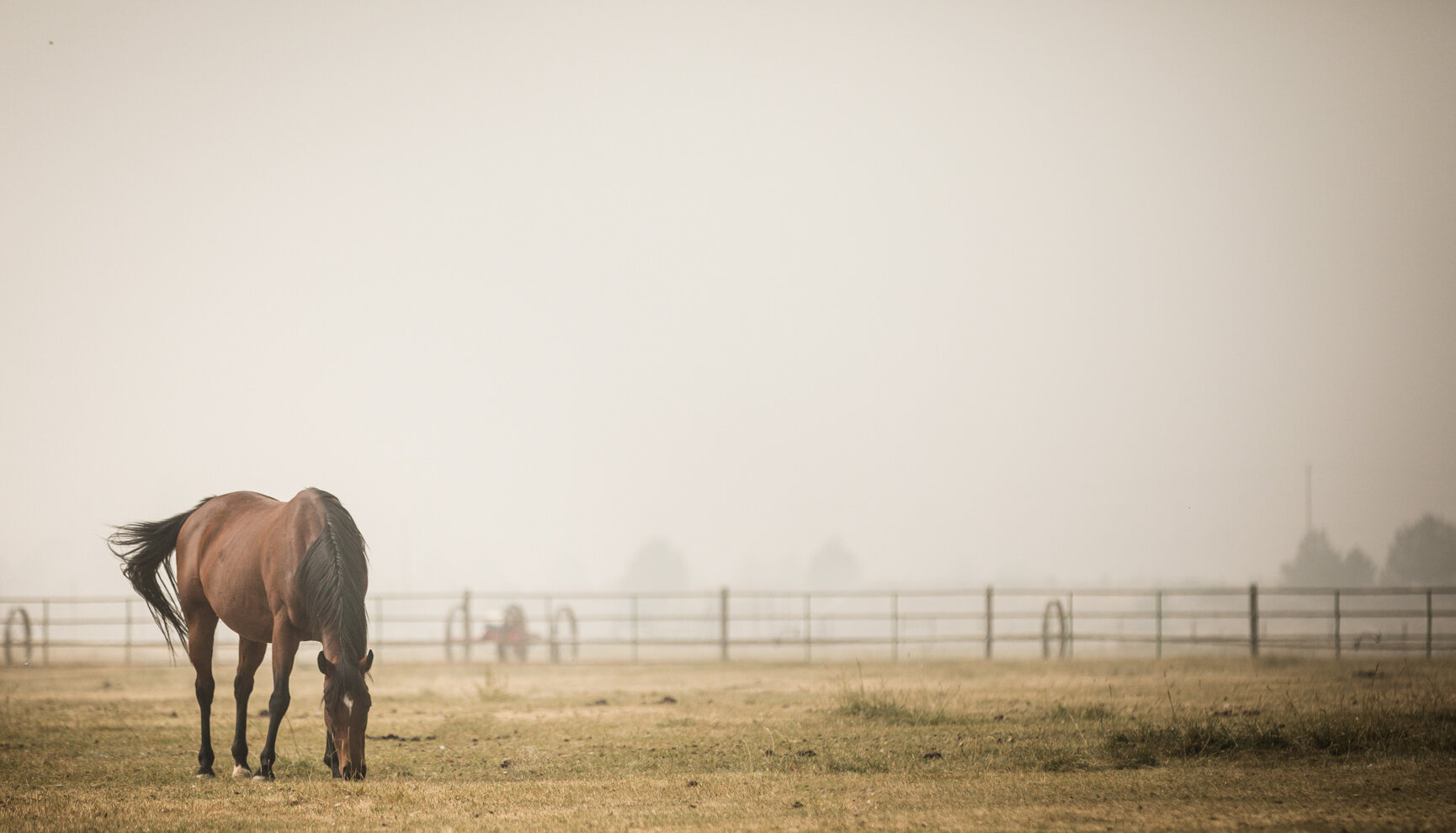Air Quality Index and Horse Health
We have been experiencing very poor air quality in Central Oregon over the last few weeks due to wildfire smoke and as I sit inside after checking on the polo pony crew I decided it would be a good opportunity to research and share my findings on the importance of understanding the Air Quality Index and how the numbers impact us and our four legged partners.
(Please note that the information shared is intended to be a useful guide for horse owners. Questions regarding your horse(s) individual situations is best addressed by your veterinarian)
The Air Quality Index (AQI) is the Environmental Protection Agency’s rating of air quality. It measures five main pollutants: carbon monoxide, sulfur dioxide, nitrogen dioxide, ground level ozone and particle pollution. The AQI ranges from 0-500. A higher number means that there is more pollution in the air and that your horse is at a higher risk of negative health effects.
AQI and horse exercise:
Green Days: Ride On! (AQI 0-50 Good): poses little to no risk and your horse should have no trouble breathing in all forms of exercise.
Yellow Days: Go for it (AQI 51 – 100 Moderate) unless your horse has pre-existing conditions such as heaves, allergies or heart disease, just complete ground work only.
Orange Days: Whoa! (AQI 101 – 150 unhealthy for sensitive groups): Limit aerobic activity to an easy trot and walk. Decreased intensity is important to ensure particulate matter is not getting deep into the lungs.
Red Days: Dismount! (AQI 151 – 200 unhealthy for all horses) air quality is getting unhealthy for all horse and people therefore avoid intense/aerobic work.
Purple days: Stall rest (AQI 201+ hazardous) limit to essential activities and if stabling is an option it can be the best way to provide some relief.
Things you can do:
When horses are exposed to poor air quality, especially for long periods of time they are prone to developing a cough, nasal discharge and other respiratory complications.
Provide fresh water at all times. Water keeps your horse’s airways moist and allows inhaled pollutants to pass. If you are near a wildfire monitor for ash in the air and make sure you change out the water daily to prevent ash accumulation.
Soak hay when needed as this reduces your horse’s exposure to dust and other particles.
Give your horse appropriate time to recover if they have been exposed to wildfire smoke. It can take over 2 weeks for a horse to recover from severely agitated airways.
Contact your veterinarian if you notice any signs of respiratory distress such as chronic cough, nasal discharge, difficulty breathing, fever, keeping head and neck extended to try to breath, increased abdominal effort and nostril flare, pale or grey mucus membranes in your horse or a respiratory rate above 30 breaths/minute (the normal respiratory rate is 12-24 breaths/minute).
Below is a chart created by Equus magazine which lists all the AQI colors and ranges and what they mean for horses.





